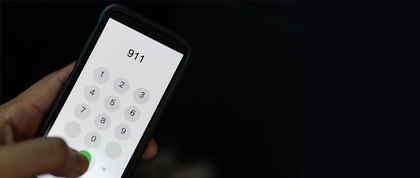
Photo by Getty Images
More than 130 jurisdictions across the US have introduced alternative crisis response programs that use trained professionals other than police to respond to certain 911 calls, including mental health and substance use emergencies. New research from NYU School of Global Public Health finds that while the majority of adults are willing to call the police during an emergency, certain populations may be hesitant to call 911 in the first place—meaning that these alternative crisis programs may be missing important at-risk groups.
Unwillingness to call 911 can result in delays to medical care in emergencies, including drug overdoses. However, there’s long history of aggressive policing in low-income communities of color—risks that persist, despite federal intervention and police reform initiatives. Indeed, the risk of experiencing injury or death during police interactions in these communities is significantly higher, particularly among those with mental health or substance use crises.
To better understand how willing US adults are to call the police during an emergency, the researchers—led by Saba Rouhani, assistant professor of epidemiology at NYU School of Global Public Health—surveyed more than 5,000 adults from the eastern United States. They found that 80 percent of adults were willing to call the police in an emergency, but this varied based on factors related to identity and personal experience.
Older and White adults were highly likely to be willing to call police, as were those who had received assistance from the police in the past. In contrast, Black and multiracial adults, people with past mental health or substance use diagnoses, and those with past involvement with the criminal justice system were less willing to call the police.
The authors write that their findings “highlight subpopulations for whom the police are not perceived to be a viable or desired source of safety and protection, particularly communities of color and those with behavioral health histories. As jurisdictions around the country increasingly implement alternatives to policing, it is these very populations who are considered as primary targets for such interventions.”
Given their findings, the researchers stress the need for targeted messaging and alternative ways to call for help in communities with police mistrust.
The study is published online in the journal Preventive Medicine and will appear in its September issue.